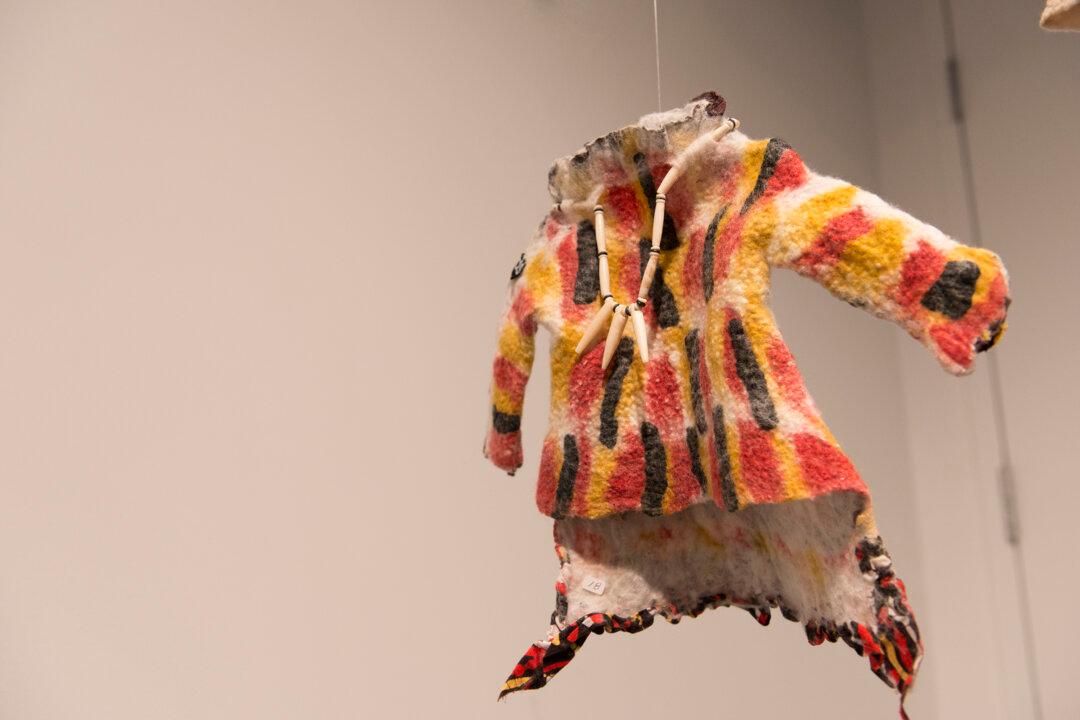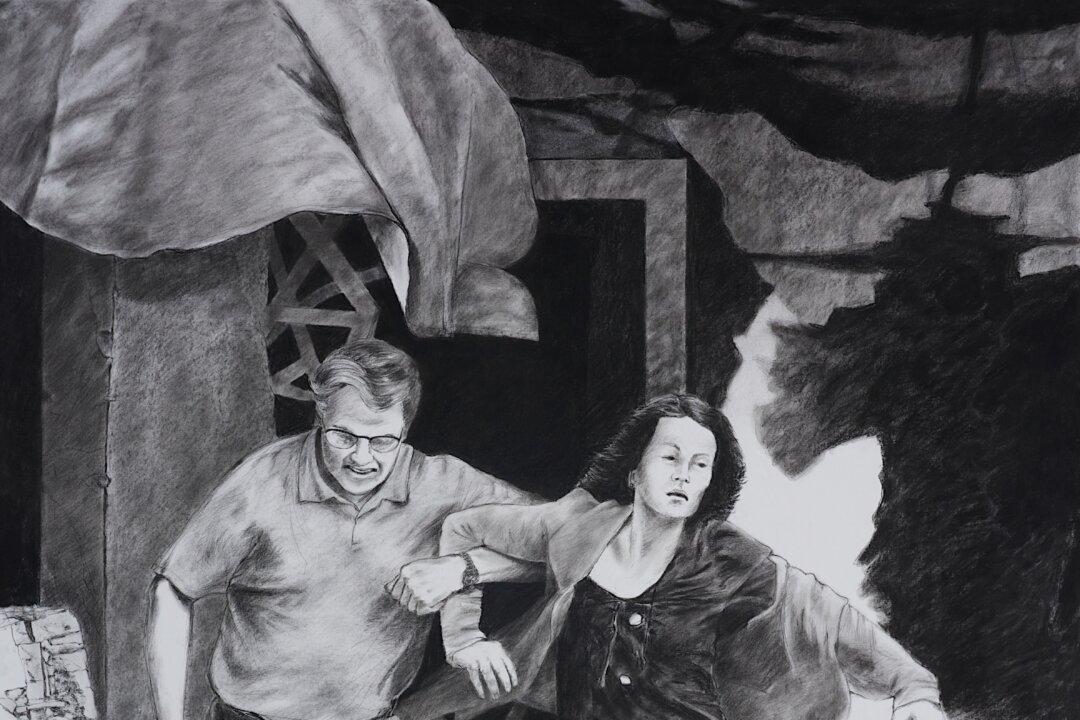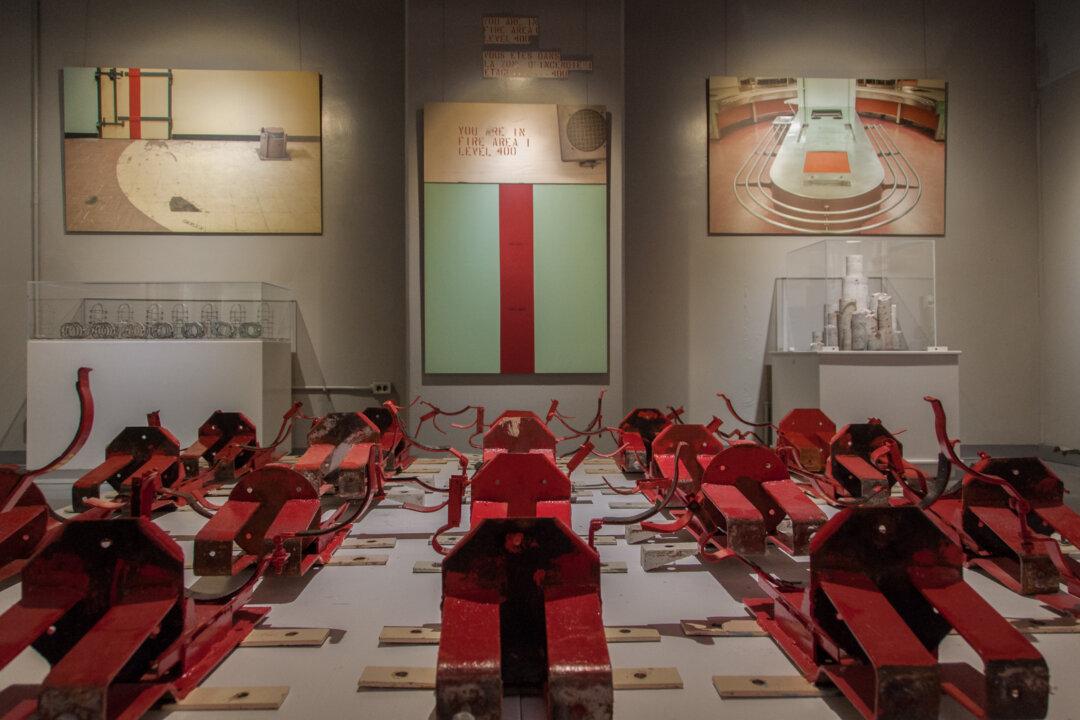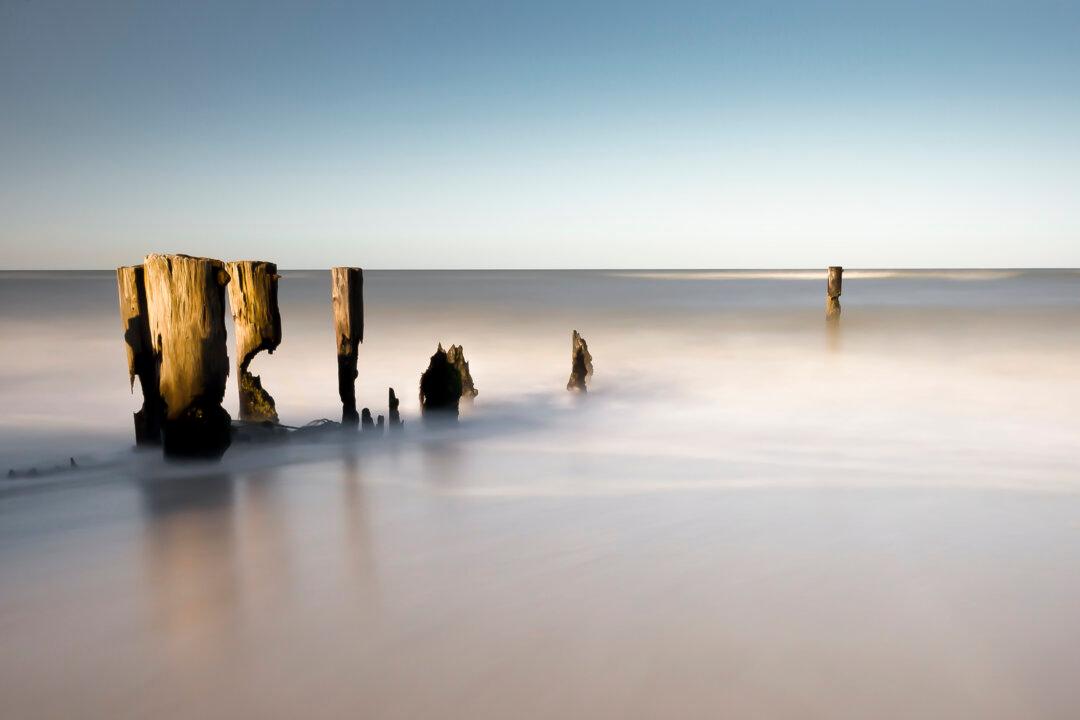Long ago, our ancestors used metaphors of weaving to tell stories of origin, stories of wisdom. In Sanskrit, the terms “sutra” and “tantra” mean “thread” and “loom.”
We still speak today of a “thread of conversation.” In the old tales, the practical skills of weaving are worked into stories of opposition and resolution. No surprise then that E. B. White made a spider the heroine in “Charlotte’s Web.”
Throughout the Ottawa Valley, until Sept. 29, we have the opportunity to see contemporary work of similar visionary genius. The 2013 International Triennial of Textile Arts, an international gathering of textile artists, displays the artists’ work at more than a dozen galleries as well as along a walking trail of 1.5 km in the Gatineau hills.
The Moon Rain Centre for Textile Arts, located in the scenic woods of the Pontiac region, is the starting point and centre of the gathering. Here, 26 artists from eight different nations—Argentina, U.K., Korea, U.S., Canada, Poland, Germany, France—have gathered to create a woodland walk of the textile arts titled “Matrices.”
“Matrices” is a site-specific installation of 13 sculptures and hangings, some as delicate as a bird’s nest or a spider’s web, each one waiting to be discovered by the walker along the trail. Each installation is an innovative example of contemporary textile arts.
The 2013 International Triennial of Textile Arts is the second edition of a visionary project initiated by Thoma Ewen, founder of the Moon Rain Centre. This year’s version is even larger, and the work of the artists Ewen has gathered is even more enthralling—just like any good story.
Textile Arts at the Shenkman
Three exhibitions currently installed at the Shenkman Centre for the Arts in Ottawa illustrate well a number of contemporary directions in textile arts.
“Dersu Uzala & the New York Times Series” is a joint exhibition of pictorial woven work by Archie Brennan and Susan Martin Maffei. Brennan’s “Dersu Uzala” series hangs on one side of the Ottawa School of Art Gallery at the Shenkman. His tapestries are of a child lost in the woods. It is wintertime, very cold, and the child is scared. The animé outlines of Brennan’s pictorial imagery tell an archetypal story of abandonment.
Maffei’s “The New York Times,” on the other hand, is a large-scale series of wry domestic portraits. Each tapestry depicts a person reading a section of the Sunday New York Times. We can see exactly what section of the NY Times Grandma holds in her hands.
The Trinity Art Gallery at the Shankman is showing “Felted Language,” a joint exhibition by Canadian artists Claire Guérette and Diane Lemire. Their work covers a range of specifically Ottawa Valley experiences—be it paddling a canoe (a sizeable canoe of felted wool is on the wall) or playing dolls with friends.
Guérette’s felted wool sculpture of a pitcher on its side with spilled milk flowing out onto the floor is more than two metres long. A series of felted wool doll’s dresses hanging on a line by Lemire honours the memory of those who worked in the factories of Hull in the 19th century.
At the Shenkman’s AOE Gallery, a solo exhibition of wide-ranging work titled “Past and Present” by Canadian artist Krystyna Sadej is on view. Sadej uses recycled materials, mostly plastics, in her new “Icescape” series. “Icescape I” and “Icescape II” suggest layers of plastic landfill that will never degrade even as the ice fields melt across the Arctic. Other work is just as sombre. The tapestry “Postcard from Prison” has a compressed, burdened feeling in its bars and blocks.
Throughout human history, the importance of the textile arts has been twinned with practicality and story-telling. Carpets take the chill off floors and walls. A prayer rug can be taken out and put away when the prayer is finished.
Tapestries, weavings, and all of the textile arts are done with deliberation—no one weaves a rug in a day. The artist works slowly and carefully. As time slows, other meanings and stories appear. The viewer sees this and stays a little longer to look a bit more closely.
Maureen Korp is an independent scholar, curator, and writer who lives in Ottawa. Author of many publications, she has lectured in Asia, Europe, and North America on the histories of art and religions. Email: [email protected]





